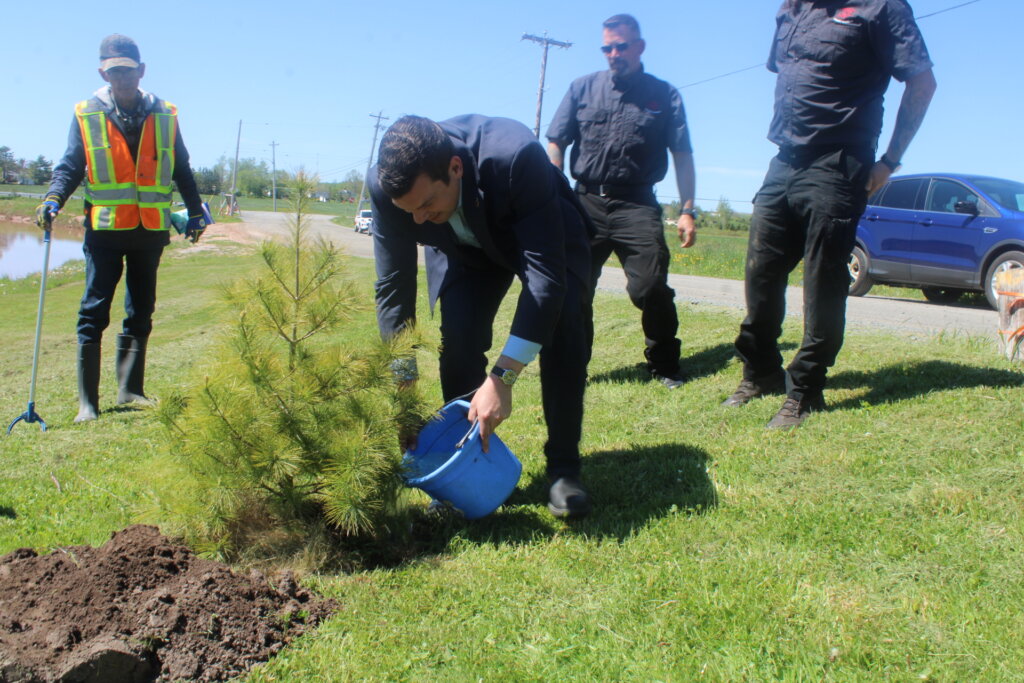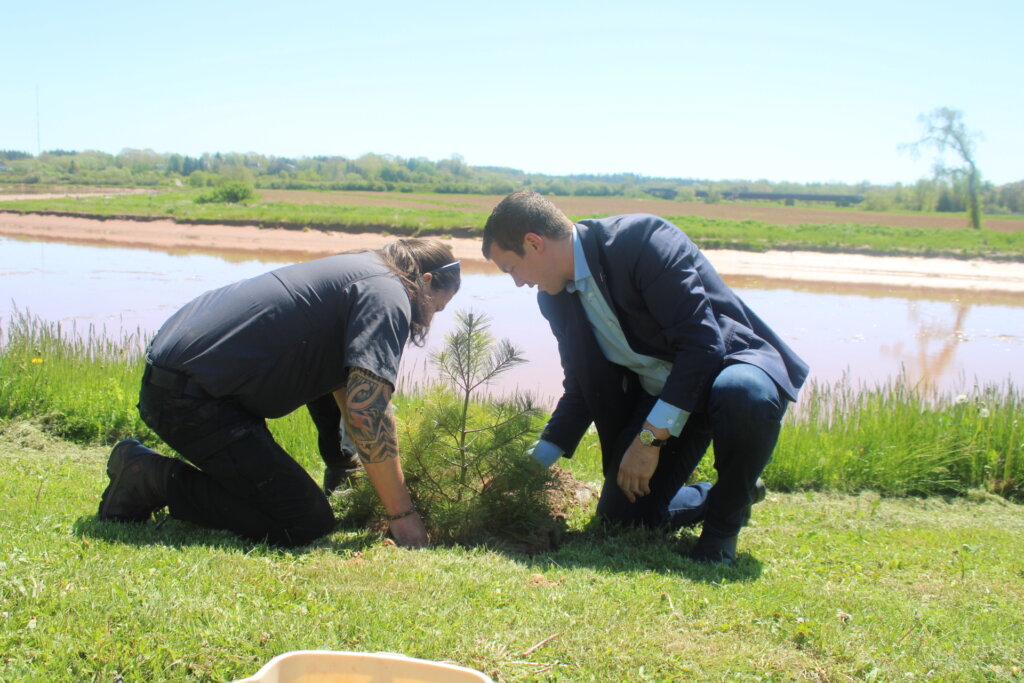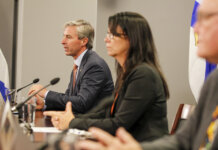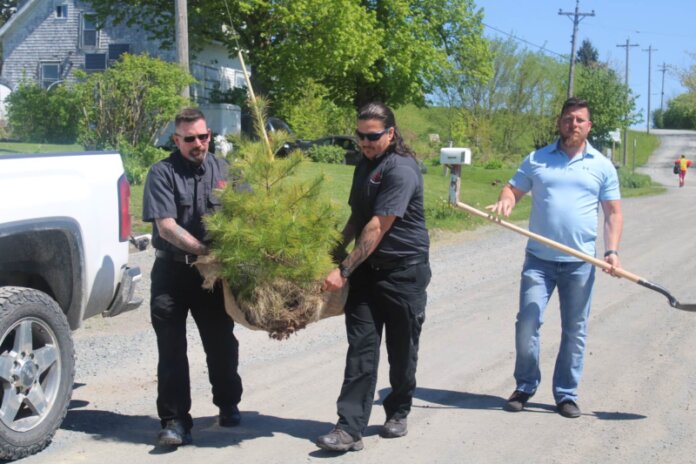SHUBENACADIE RIVER: The Shubenacadie River has needed to be cared for quite some time. That’s something the fisheries caretaker for the Sipekne’katik First Nation have known.
Now, with the help of the federal government, that caring will begin.
At the site of the former Shubenacadie Residential School on Indian School Road, Kings-Hants MP Kody Blois announced Ottawa was contributing $170,000 from its Nature Smart Climate Solutions Project to the Climate Resilience program that Sipekne’katik will undertake.
That work will see work start in Grand Lake at Lock 5 and go all the way to Stewiacke.
“We’re going to clean the river from Grand Lake to the campground in Shubenacadie,” said Matt Maloney, one of the Sipekne’katik officials on hand at the announcement. “Then we’re going to move over to Stewiacke where there’s a lot of fishing.
“People bass-fish there so that makes it a high-garbage area.”
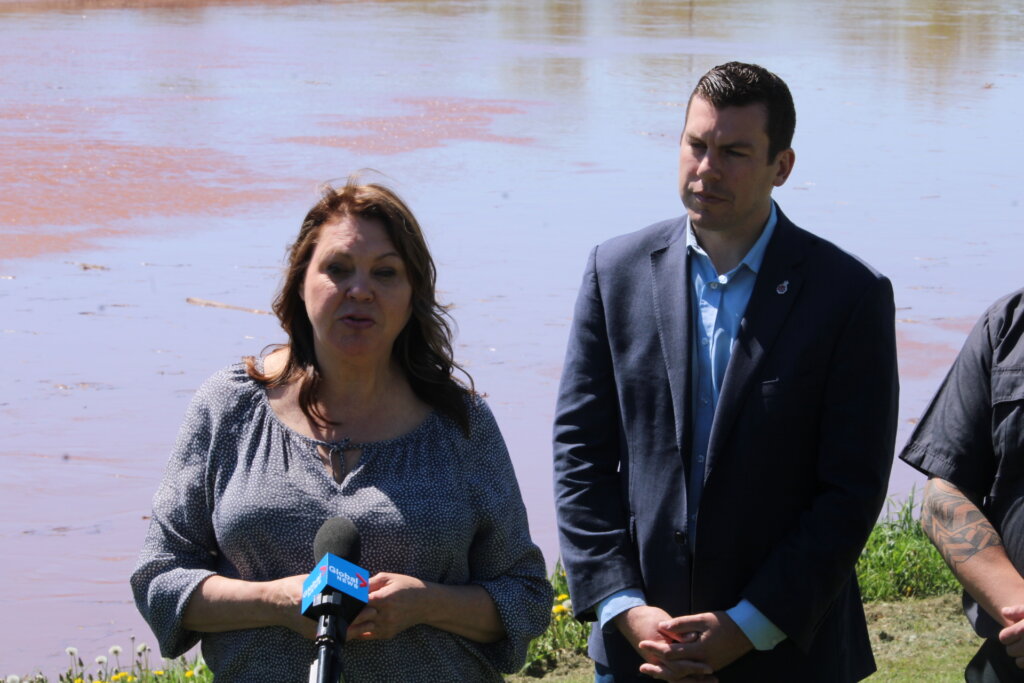
Part of the work will see trees—like the Eastern White Pine planted at two locations next to the Shubenacadie River by Maloney, his team, and MP Blois after the announcement—planted to assist with being a tree buffer around the river which is hoped will help with climate change.
“It’s hoped that will assist with mitigating the flooding, run-off from farms and eventually produce some shade,” Maloney said.
Cheryl Maloney, Sipekne’katik governance initiative lead, said he river was a gathering place for people travelling around the region,
“I think it’s a natural next step move for the Mi’kmaq to not just take our roles of being able to use the resources, but to protect the resources,” Cheryl Maloney said in her speech to the crowd gathered on a beautiful sunny day.
Tree planting will begin by September, but community engagement is expected to happen first.
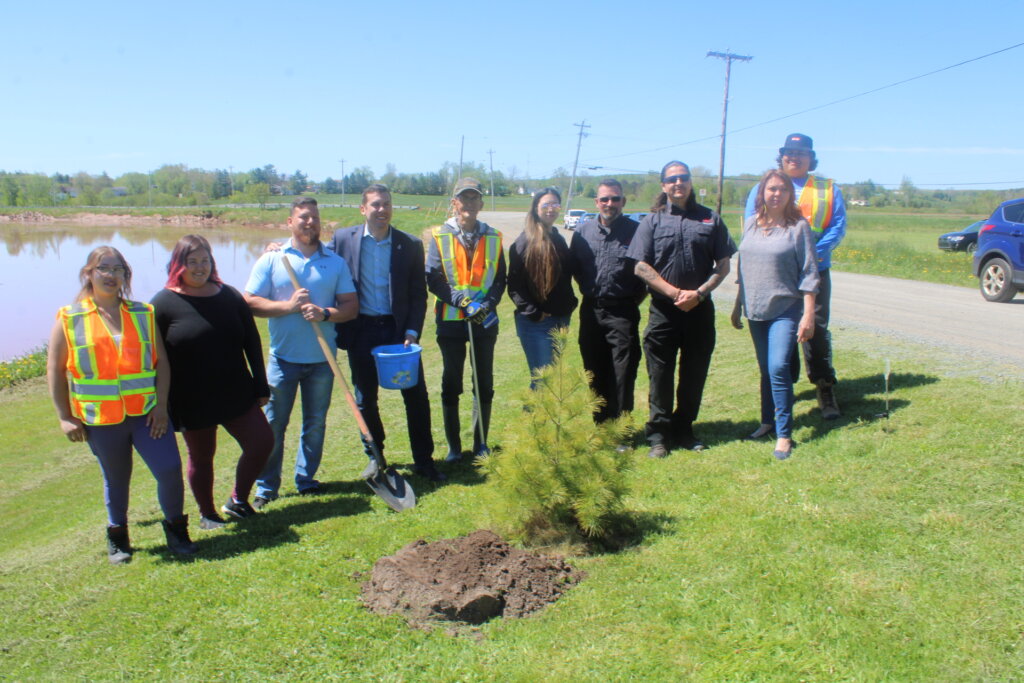
Part of that engagement, Cheryl Maloney said, is to engage and connect with local homeowners and farmers in the Shubenacadie area community.
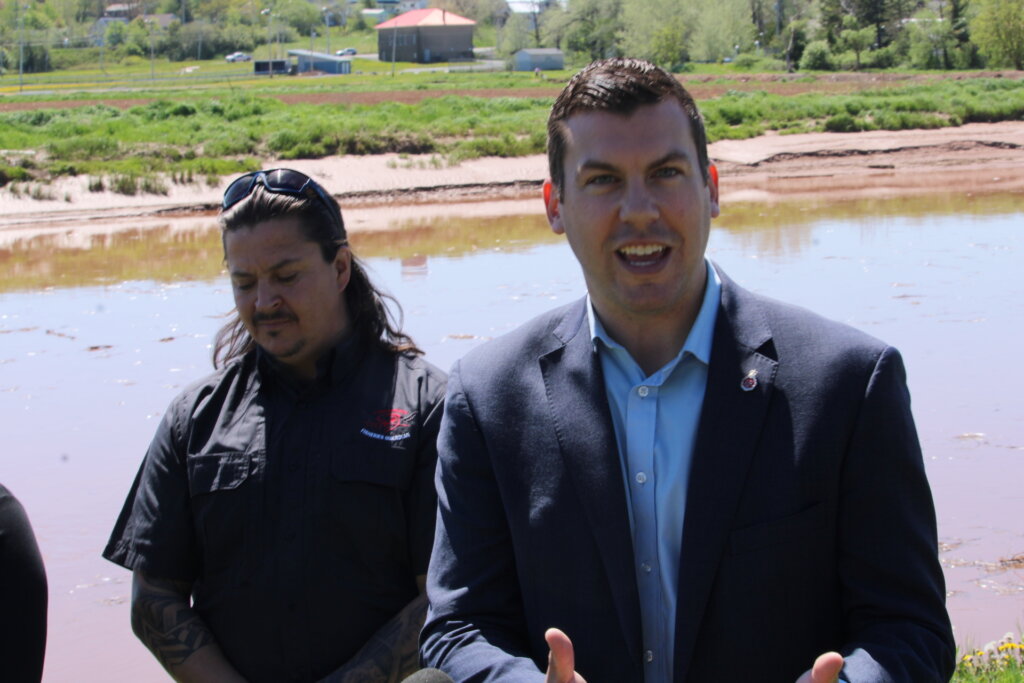
Kody Blois, MP for Kings–Hants, said the strength of biodiversity may have protected against the erosion along the river.
“You look right here along this riverbed, this used to be parallel with river at one time,” he explained. “Had there been more of a forested area, perhaps the roots and the biodiversity would’ve protected against erosion.
“Here, it could eb working on ways to create biodiversity along rivers. In Saskatchewan, it could be increasing certain types of practices in farming, with a focus on protecting wetlands.”
Sipekne’katik Chief Mike Sack was unable to make the announcement.
